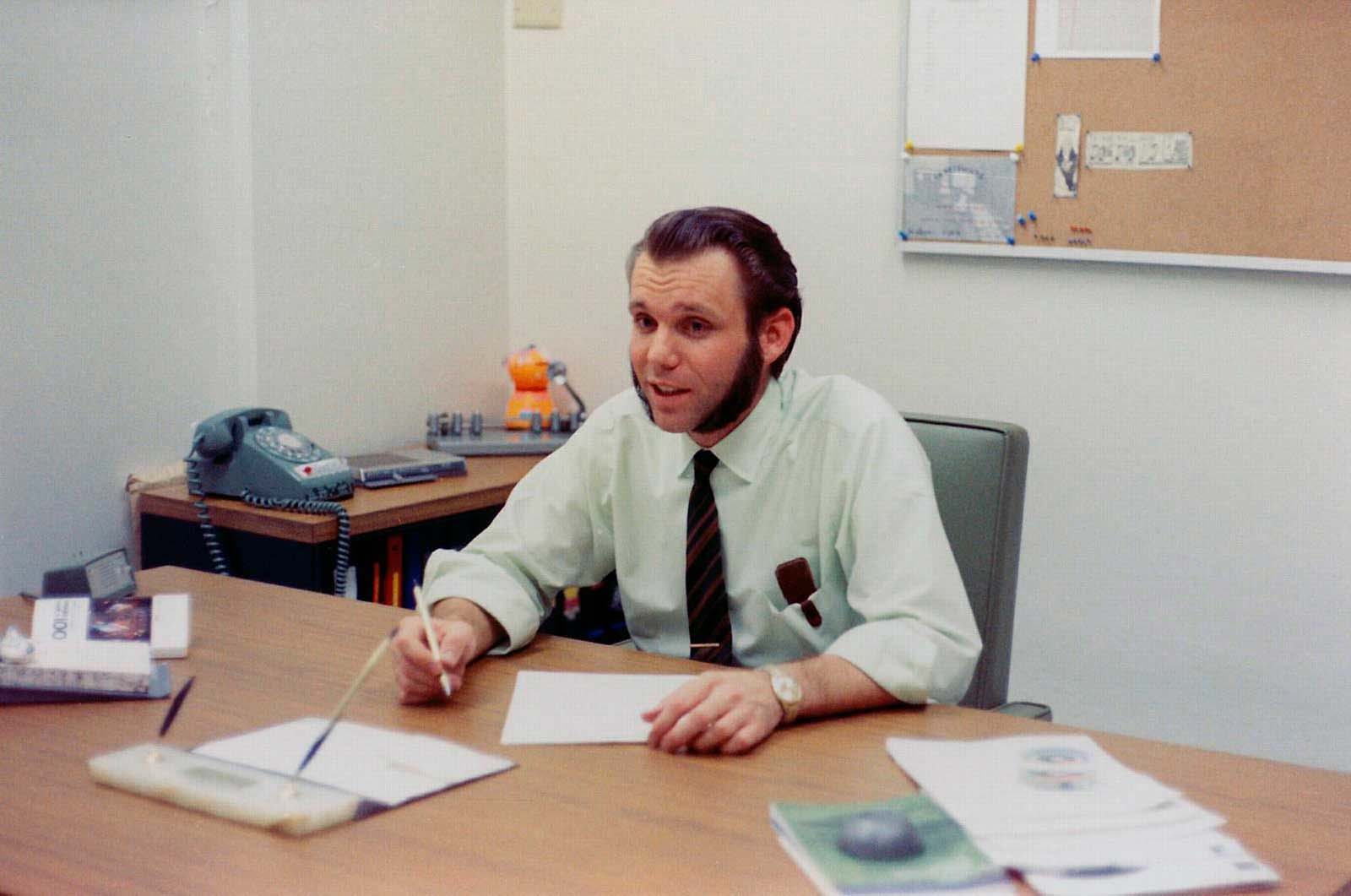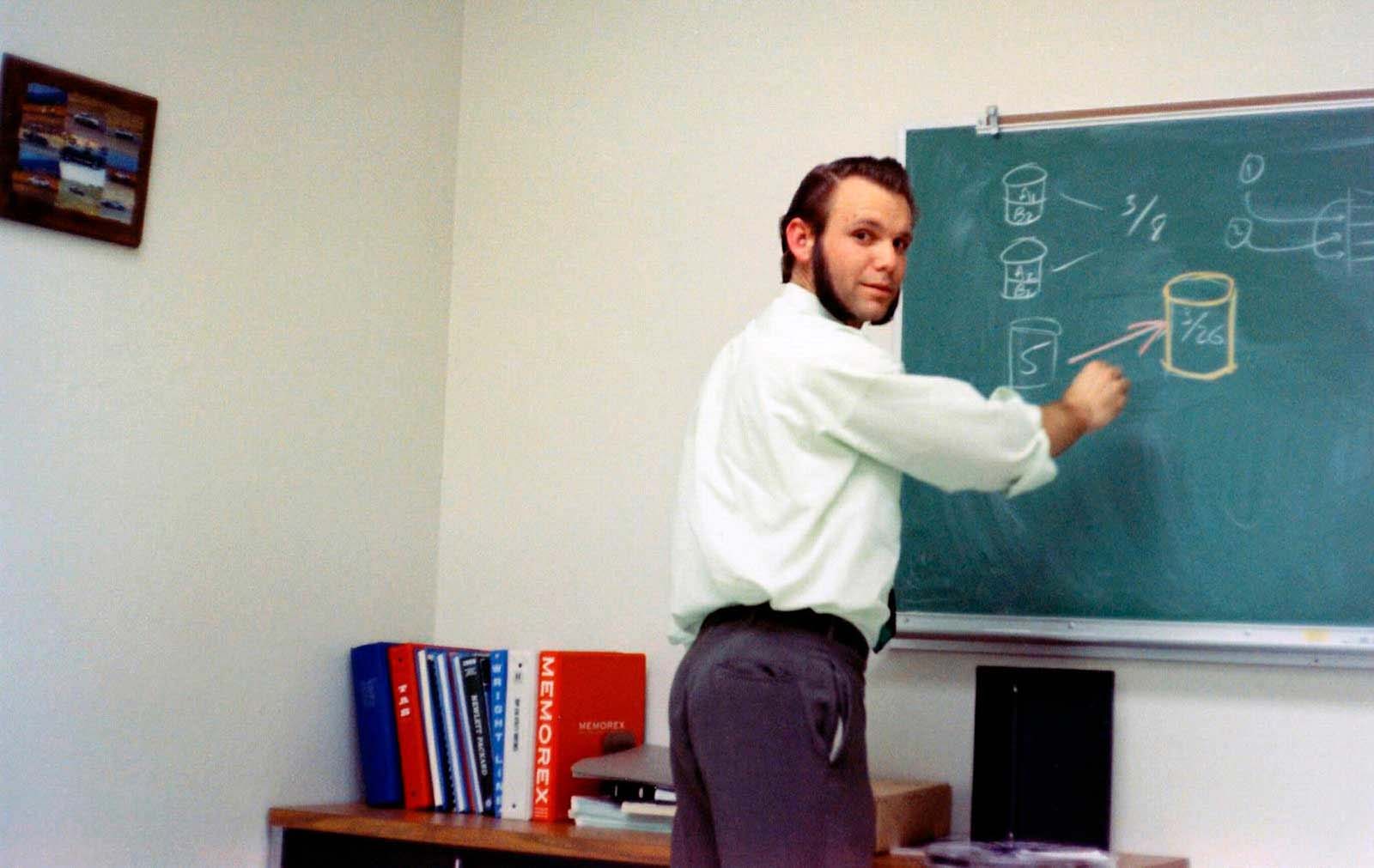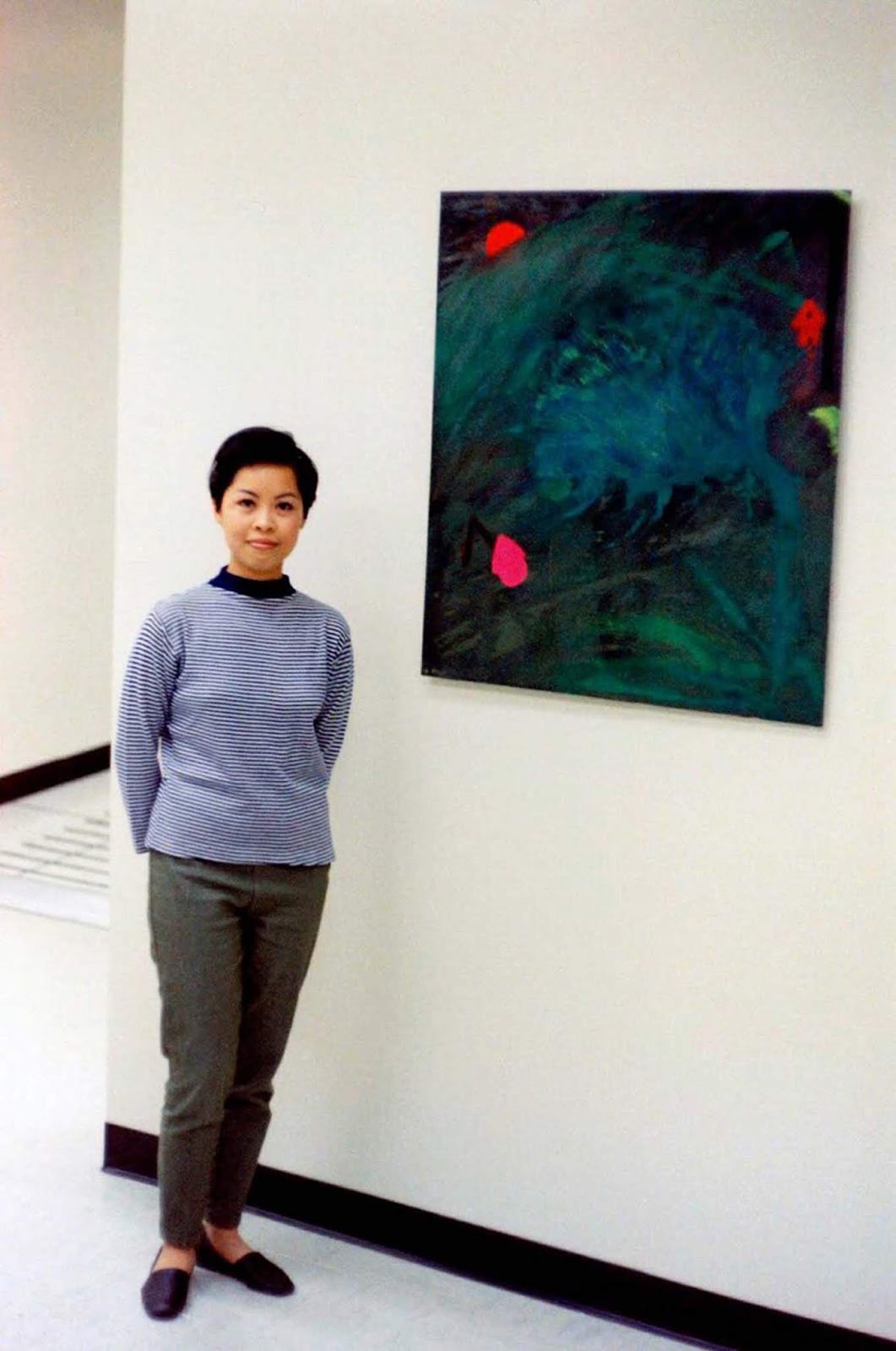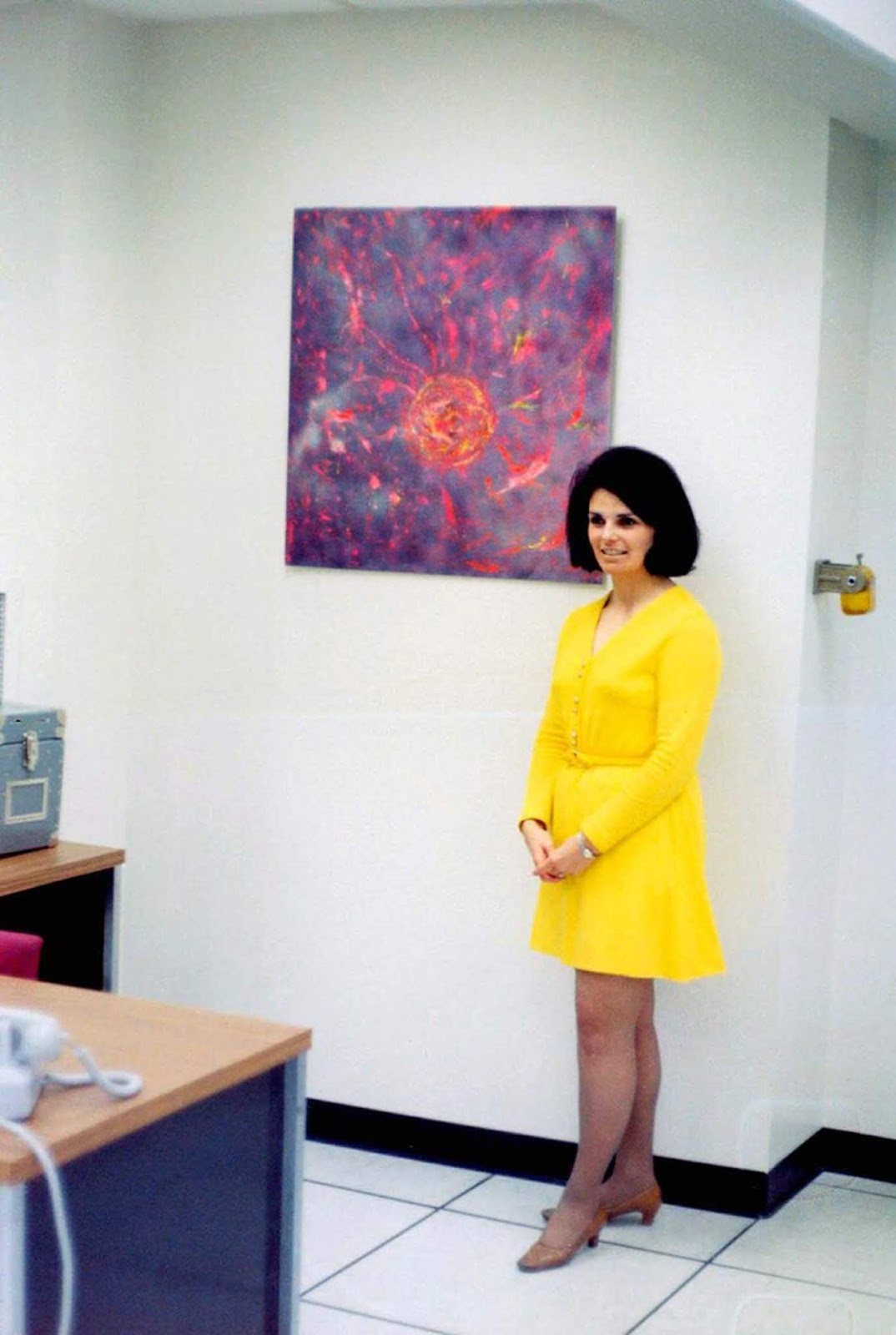
Larry Luckham. Operator Manager. Check out the slide rule in the pocket and the sideburns. Hey, it was the 1960’s!
Since the early 1900s Bell Telephone Laboratories or Bell Labs, has been a major source of technological experimentation and change. Bell Labs has sponsored research far beyond the limits of its original focus, the telephone. From telephones to radar to computers, the scientists at Bell Labs have had a hand in the most important inventions of the 20th century.
By the early 1920s, the research effort had grown so large—over 3600 employees by 1924—management decided to split it off into its own organization.
This new subsidiary Bell Telephone Laboratories Inc. began operations on January 1, 1925. It was owned jointly by AT&T and Western Electric and occupied the existing research building in New York City. Bell Labs was on its way to becoming the world’s largest industrial research laboratory.
In the 1930s and through the end of World War II, Bell Labs continued to expand. The company established new research facilities in New Jersey, where open land was still plentiful and cheap, and radio research could be conducted free of the interference found in New York City.
The huge resources of AT&T, which had a monopoly on telephone service, enabled Bell Labs to undertake fundamental research that had only loose ties to ordinary telephone service. In 1933, for example, Karl Jansky, working at the Holmdel, New Jersey facility, discovered radio astronomy.

Lecture. “I have no idea what I was discussing here, but somebody picked up the camera.”
Another trend was closer cooperation with the military, which had begun during World War I, and which continued in the 1930s as Bell Labs began working on radar and military communication systems.
When World War II came, Bell Labs invented or improved numerous military systems, such as the two-way radio, proximity fuses, semiconductor devices, radar, sonar, computers, the “bazooka,” and the first encrypted communications systems.
This system, Sigaly, enabled US President Franklin Roosevelt and British Prime Minister Winston Churchill to hold regular telephone conversations across the Atlantic.
At the end of the war, Bell Labs was at the peak of its power. From the late 1940s through the late 1970s, it reigned unchallenged as the largest and perhaps most inventive industrial laboratory in the world.
Its engineers and scientists invented or brought to fruition numerous technologies, including the first transistor and many of its important variations.

“My Secretary, Roxanne. She was absolutely great!”
Although the integrated circuit was invented elsewhere, construction techniques invented at Bell Labs established many of the necessary precursors to it. The same could be said for fiber optic transmission, electronic switching systems, cellular telephony, satellite communication, solar power, and other technologies we use today.
Although not all of their elements were invented at Bell Labs, it was there that the long and incredibly expensive development process brought them to maturity.
And while there were notable failures, such as the “Picturephone” system, there were numerous inventions, some little-known at the time, which later became very important.
The Charge-Coupled Device or CCD, now universally used in digital cameras, video cameras, the Hubble telescope, and elsewhere, was one such development. Bell Labs engineers Willard Boyle and George Smith invented it in the 1970s.

“Computer Operations Supervisor. Don’t let the oscilloscope fool you. Bea didn’t work on the hardware. But she was an outstanding supervisor.”
In the 1960s, Lawrence Harley Luckham worked at Bell Labs and, one day, he took a camera to work: “In the late ’60’s I worked for Bell Labs for a few years managing a data center and developing an ultra high-speed information retrieval system. It was the days of beehive hair on women and big mainframe computers.
One day I took a camera to work and shot the pictures below. I had a great staff, mostly women except for the programmers who were all men. For some reason, only one of them was around for the pictures that day”. These photographs shown here are taken by Larry Luckham. All of the captions are original.

“Bea. The computer room was in the basement of a building for security and other reasons. There was no natural light and I had a slim budget for decorations. I also had staff with artistic talents so I bought the materials and they made their own decorations.”

“Computer Operator. Many names have disappeared from my memory after 35 years, but these were an excellent and dedicated group of people.”

“Computer Operations Supervisor. Yvonne was another of the computer operations shift, three shift supervisors and a great asset to the project.”

“Yvonne. A good sense of humor was one of the things that distinguished almost every one of my staff for this project.”

“Computer Operations Supervisor. This was a large IBM mainframe computer around 1967 when this picture was taken. One meg of memory, 648 meg of hard drives, no video and it cost in the millions!”

“Computer Operations Supervisor. Many names have disappeared from my memory after 35 years, but these were an excellent and dedicated group of people.”

“Magnetic Tape. Our backup storage was 9 track magnetic tape.”

“Programming is Fun. Even when it doesn’t work the way it was supposed to the first time!”

“Programmer Relaxation. Bits and bytes and a little folk music go a long way. All the programmers were mathematicians by training.”

“Computer Operators. Many names have disappeared from my memory after 35 years, but these were an excellent and dedicated group of people.”

Computer Operators.

“Tape Library. Helen was our tape librarian.”

“Tape Cleaning. After a few uses tapes were cleaned and tested before being put back into circulation.”

Artist & Work.

Artist & Work.

Tape Library.

“Data Control Unit. Karen was one of about a half dozen very smart people in the data control unit making sure that the data going in was good.”

Data Control Unit.

“Data Control Supervisor. Toni on the left supervised the Data Control Unit. “

“Data Terminal Test Room. These special prototype terminals were state of the art at the time and were the first displays in which the data was first written to memory then displayed.”

“Data Terminal Test Room. These special prototype terminals were state of the art at the time and were the first displays in which the data was first written to memory then displayed.”

“Data Terminal Test Room. These special prototype terminals were state of the art at the time and were the first displays in which the data was first written to memory then displayed.”

“Demonstration Center. Demonstrations of the system were presented in a special series of rooms created for the purpose. In addition to a working terminal the center was equipped for a short film and slide presentation.”



